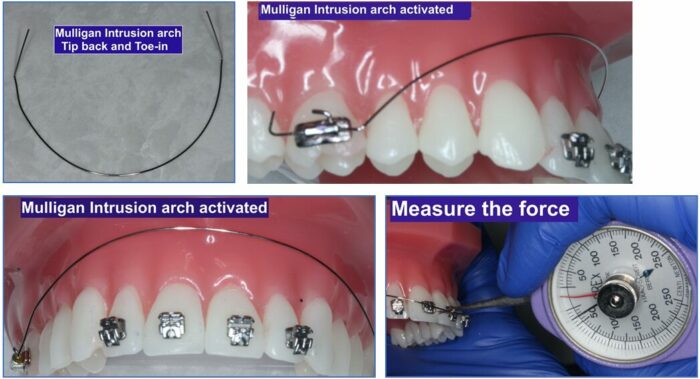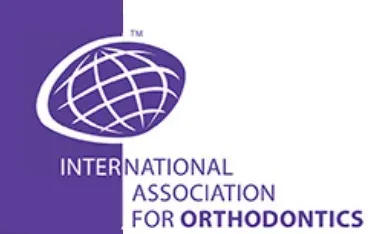October’s Tip

Mulligan Mechanics Part IV Mulligan Intrusion Arch
By Dr. Adrian J. Palencar, MUDr, MAGD, IBO, FADI, FPFA, FICD
October 2024
IAO Diplomate
68 – Tremont Drive, ST. Catharines
ON L2T 3B2, Canada
Do not memorize, understand – Dr. T. Mulligan
After the .018 SS arch wire is measured and cut, it should be inserted into the maxillary or mandibular tubes, to evaluate the parallelism and the natural tip of the molars. The 30° – 45° tip-back (gable bend off center bend, “V” pointing occlusally) in front of the molar tubes precipitates: a small intrusion and labial moment (proclination, flaring) on the incisors. Large extrusion and distal moment (tipping) on the molars, this renders the dental arch longer, therefore, there should be left 3 – 4 mm arch wire distally to the molar tubes, followed by annealing and bend-back (cinch).
Also, there should be about 15° – 20° toe-in bent in front of the maxillary molar tubes (only slight in the mandible), to disto-rotate the molars and add slight buccal moment (torque). This toe-in bend counters the lingual moment precipitated by the extrusion of the molars. The amount of the applied force should be measured with the Gram gage (do not exceed 70 grams).

References:
- Mulligan T.F., Common Sense Mechanics in Everyday Orthodontics, (190)
- Palencar A. J., Case finishing and Mechanics, (29)
